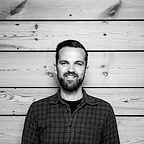As we reach for the stars
“It is not in the stars to hold our destiny but in ourselves,” said Shakespeare, and with that he reminded everyone of the agency given to us at birth to shape the lives we want to live. While this may seem quite obvious to many, we generally still seem to forget about it when we discuss — and often worry about — the future. And more specifically, our digital future.
The stars are clearly no longer the dominant mystical force that we trust to shape our destinies, but we have found another almost other-worldly deity to worship: Technology. Always a source of both uncertainty and opportunity — not just now, but throughout history — it seems more important than ever to remember that we are shaping technology, not the other way around. Or are we?
AI will at some point reach sentience: It may take 25 or 50 years, but it will happen. The outcome will be beings that we will need to co-exist with, and you can argue that they represent that supernatural force that Shakespeare so confidently wrote off. In other words, it will be part of the shaping of our destiny. But is that so bad? If we imagine AI to become Terminator-like creatures that may decide that humans would be better off extinct: Yes, that would be bad. But what if the evolution of the human species and that of AI are much more directly entwined leaving us not to develop as rivals, but rather a team of one?
Right now, we are already dissolving the idea of the human being as remaining a solely biological, naturally evolved organism. Augmentations such as medical implants (pacemakers, hip replacements, etc.), sensory enhancements (ie. glasses, contact lenses, hearing aids) and advanced surgery coupled with the potentials of the new frontier of DNA sequencing and gene modification is just the beginning of making humans something more.
As we continue to hack and improve ourselves, the human being and the machine will melt together long before true AI — or what is referred to as AGI, Artificial General Intelligence — becomes a reality. Small AI brain enhancements, or what Doug Engelbert back in 1962 coined IA, Intelligence Amplification, will merely be the first stage of the amalgamation of our brain and computer chips, and down the line our reality, identity and self-perception will naturally resemble the node structure of computer networks much more than we are able to imagine at this point. It is the natural proliferation of the kind of super-connectedness that we are already fully embedded in. This merging — the true realization of the cyborg — will happen well in advance of the emergence of artificial superbeings saying ‘hello world’ for the first time.
In other words, building that superbeing capability into ourselves and enhancing ourselves rather than building it as an external entity might be the natural step. If you think about it, it plays right into Shakespeare’s quote and human nature: The ability to shape our destiny comes from within. Can you imagine future generations using the pinnacle of technological achievement to advance anything other than ourselves and our own ability and opportunity? Those believing in the singularity predict it to happen around 2045; that’s when the first humans will upload themselves to the cloud. Might as well download some superhuman AI too, then.
Let’s take a step back to the present day and say to ourselves: If this is likely where we are heading, then let’s abandon our fear of this new technology and replace it with constructive and critical curiosity. Whichever supernatural power it will produce will ultimately become ours to absorb anyway. Let’s take control and design that future in which new amazing technology adds to the human condition, rather than taking away from it. Because this is the role of design: To proactively look into the future with curiosity and making that future one that is better for us than where we currently are.
Historically, when new technologies have presented us with the inability to see the future clearly, we have always been able to rely on design practices to help us explore and take charge to create sound and healthy outcomes, even if the path towards it is unclear. Our current challenges are no different; they are just taking us beyond our wildest dreams.
Or at least the dreams of Shakespeare.
This article was originally published in Danish Design Centre’s 40-year anniversary magazine, “Shaping the Next”. Read the full magazine here: https://danskdesigncenter.dk/en/anniversary-shaping-next-40
